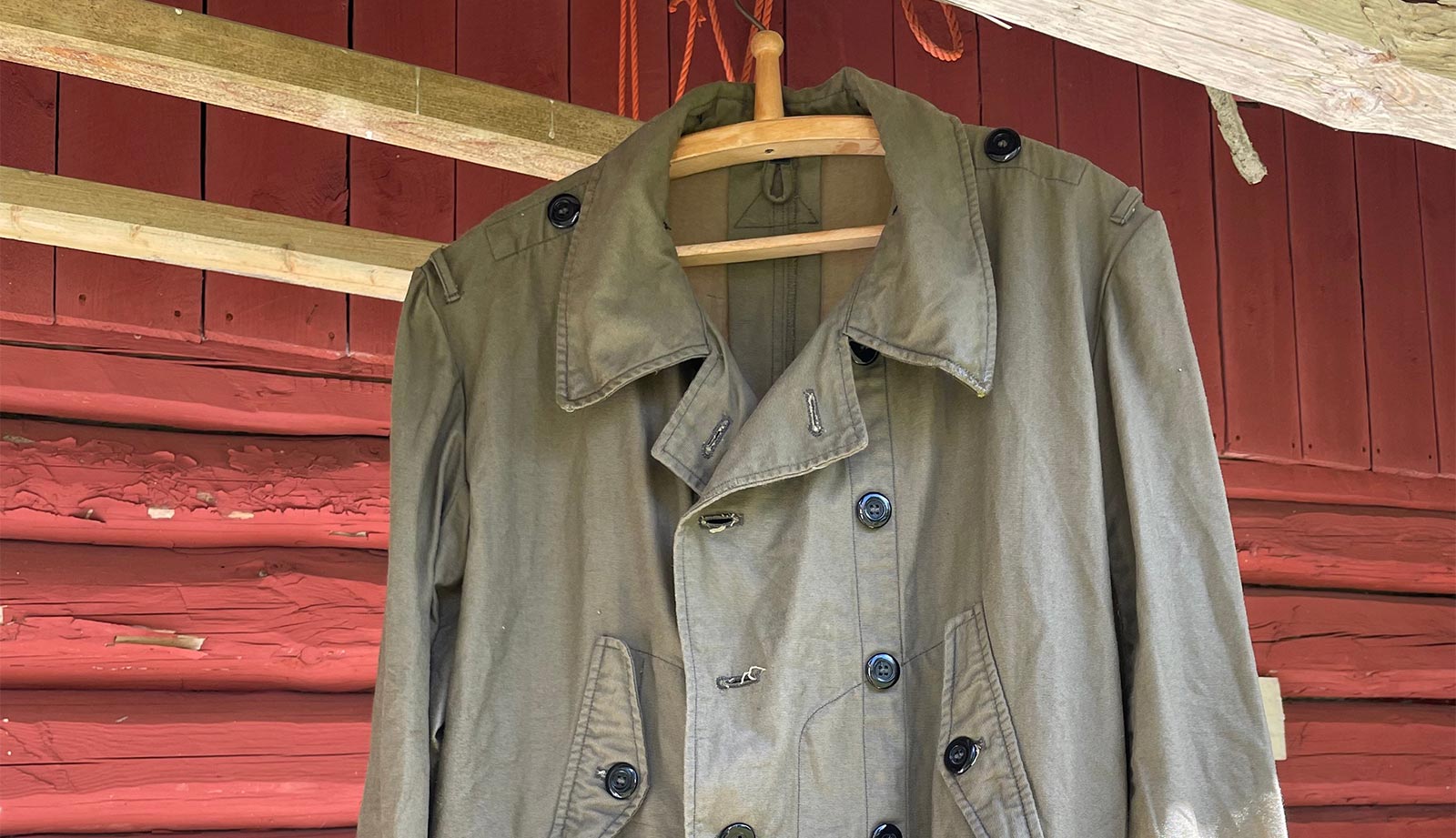
DIY Oilskin Coat (or oilskin anything)
DIY Oilskin Coat (or oilskin anything)
Fed up with modern rainwear technology? It's time to take action then! Mankind has created wonderful alternative solutions to Gore-Tex and PVC ages ago. All you need is a cotton/linen garment, linseed oil, turpentine and a lot of patience.
What, why
Rain has been bringing us humans joy and trouble since the times of the Roman Empire. Fortunately we have developed these methods of staying dry (or dry-ish), which usually revolve around the properties of certain fabrics. One of the really old timey tricks is oilskin cloth. It's just cotton treated with linseed oil. What's best, creating your own oilskin garment is very easy!
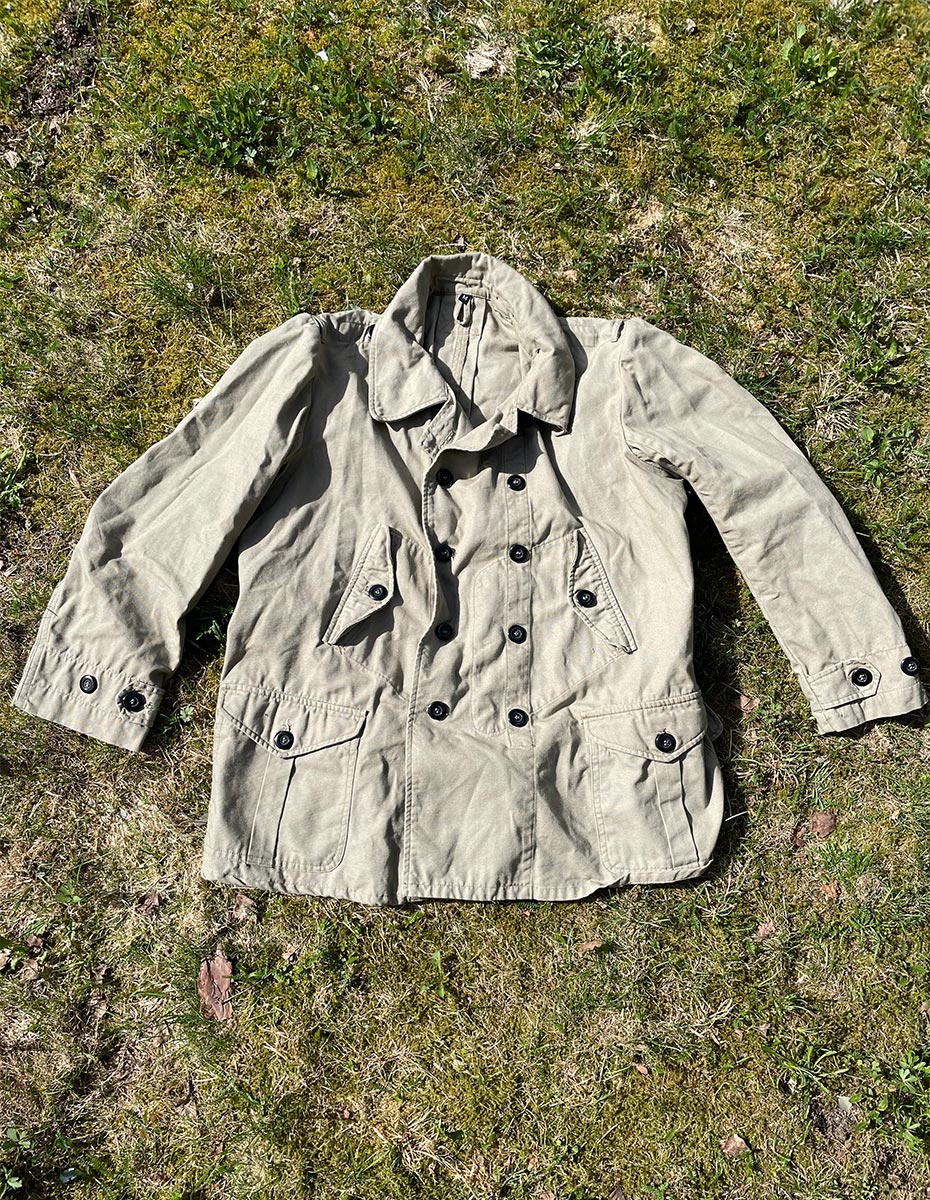
Pictured is the soon-to-be rainproof reproduction Gebirgsjäger Windjacke. Washed and ready for treatment.
My own oilskin coat I decided to create from a reproduction German Gebirgsjäger Windjacke, a mountain trooper jacket. This rather gentlemanly military garment will serve me well in more vintage-oriented time in the woods - a perfect victim for some linseed oil and turpentine!
The "kit list"
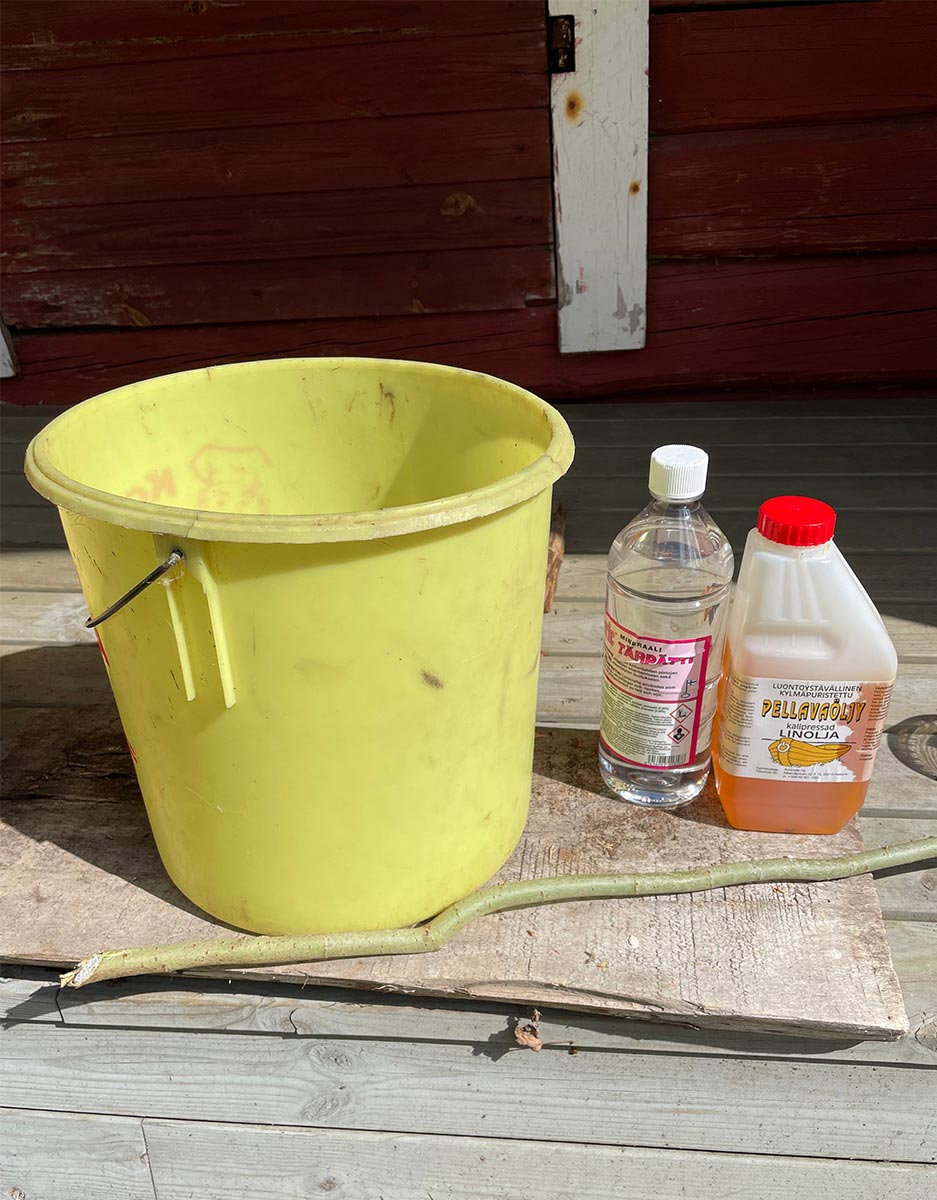
- Linseed oil, for this jacket 1 litre is fine
- The same amount of turpentine
- A vessel (like a bucket)
- Some kind of a mixing stick
- Protective gloves
- A well ventilated place to dry the garment
The turpentine allows the oil to soak up better and fill every pore. Then the turpentine dissipates away.
Important! Linseed oil has an excitable tendency of self combustion if left lumped in a poorly ventilated place. So make sure the garment can dry properly spread out in good ventilation.
Step-by-step instructions
- Wash the garment before treatment to make it as "virgin" as possible.
- Gather your equipment and make sure everything's ready. Remember that the garment will drip oil and turpentine when it's drying out... for a long time.
- Make a 50/50 blend of linseed oil and turpentine in your bucket. Mix well.
- Toss in the garment and shake & poke it around until it's absolutely, thoroughly wet.
- Lift the garment out and hang it to dry.
- Wait until dry. This can take even a month.
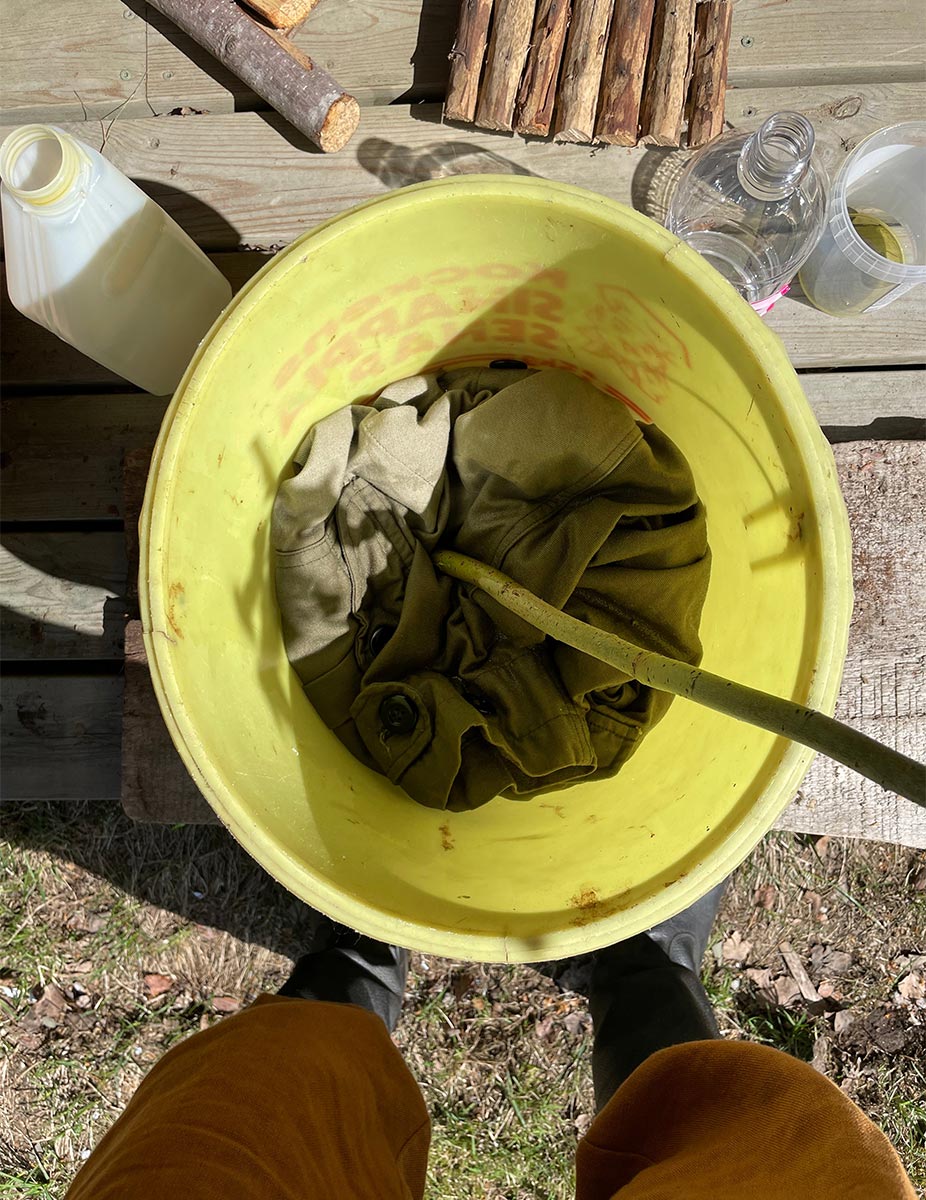
The coat is soaked in the oil/turpentine mix.
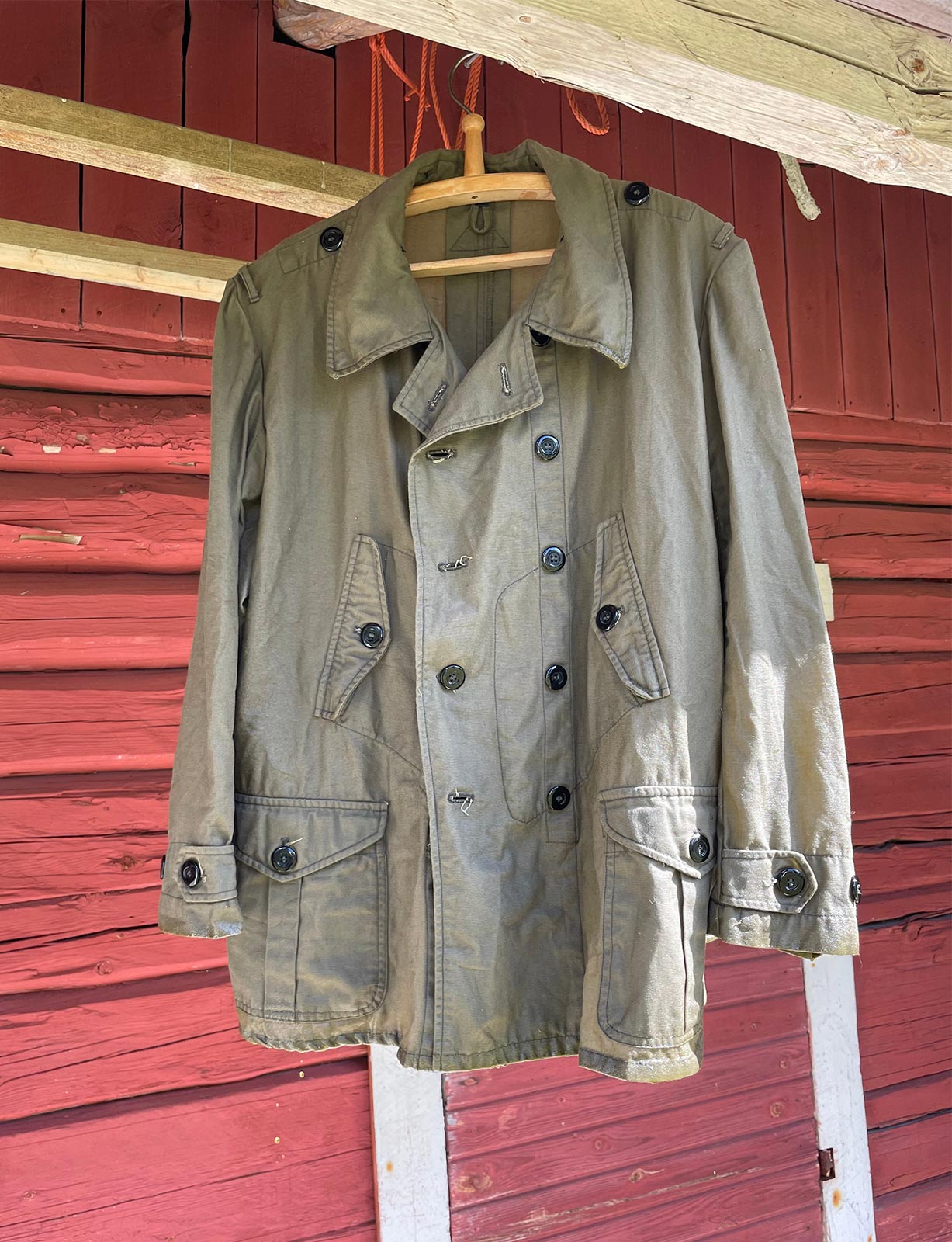
Drying out the garment. The colour shade wont' get much lighter. Important! Linseed oil has an excitable tendency of self combustion if left lumped in a poorly ventilated place. So make sure the garment can dry properly spread out in good ventilation.
There are fancier instructions too
These are the simplest possible instructions for making an oilskin garment. You can find a lot of similar and a bit different ones in the internet, but the end result is more or less the same. You can try to alter the blend or warm up the linseed oil beforehand, have a rain dance or add in some pigment for a different colour shade.
Works with all cotton & linen items
Yes, these instructions work for just about any item made of cotton or linen, such as tarps, tents, pants, skirts, shoulder bags and rucksacks, sheets, towels, hats, table cloths, and sacks of all sorts. Our example is just this coat.
Some notes
- The garment will stink of linseed oil and turpentine especially when drying.
- The colour shade will darken a bit.
- If there are other materials in the fabric (like a woolen liner), we do not know how they will or will not behave.
- The oiled garment can also be treated with fabric wax.
- It will smell like linseed oil even when dry.
How did it go?
As the coat was hanging there drying, the excess linseed oil slowly packed in the lower half of the coat, so now the areas around the lower pockets and sleeve cuffs are like tin cloth, while the shoulders are more modestly treated. Oh well, I guess I can wax the upper part. The coat also smells like linseed oil, so if I would leave it in a small room, the odour would slowly fill the room. I hope A) you can keep your oilskin article in an uninhabited place, B) like the smell, C) your possible spouse likes the smell!
If I were to compare the before/after results to Germans as portrayed in classic 'men on a mission' type action movies, the untreated jacket would be "Where Eagles Dare" while the post-treatment jacket would look like "Cross of Iron". See both.
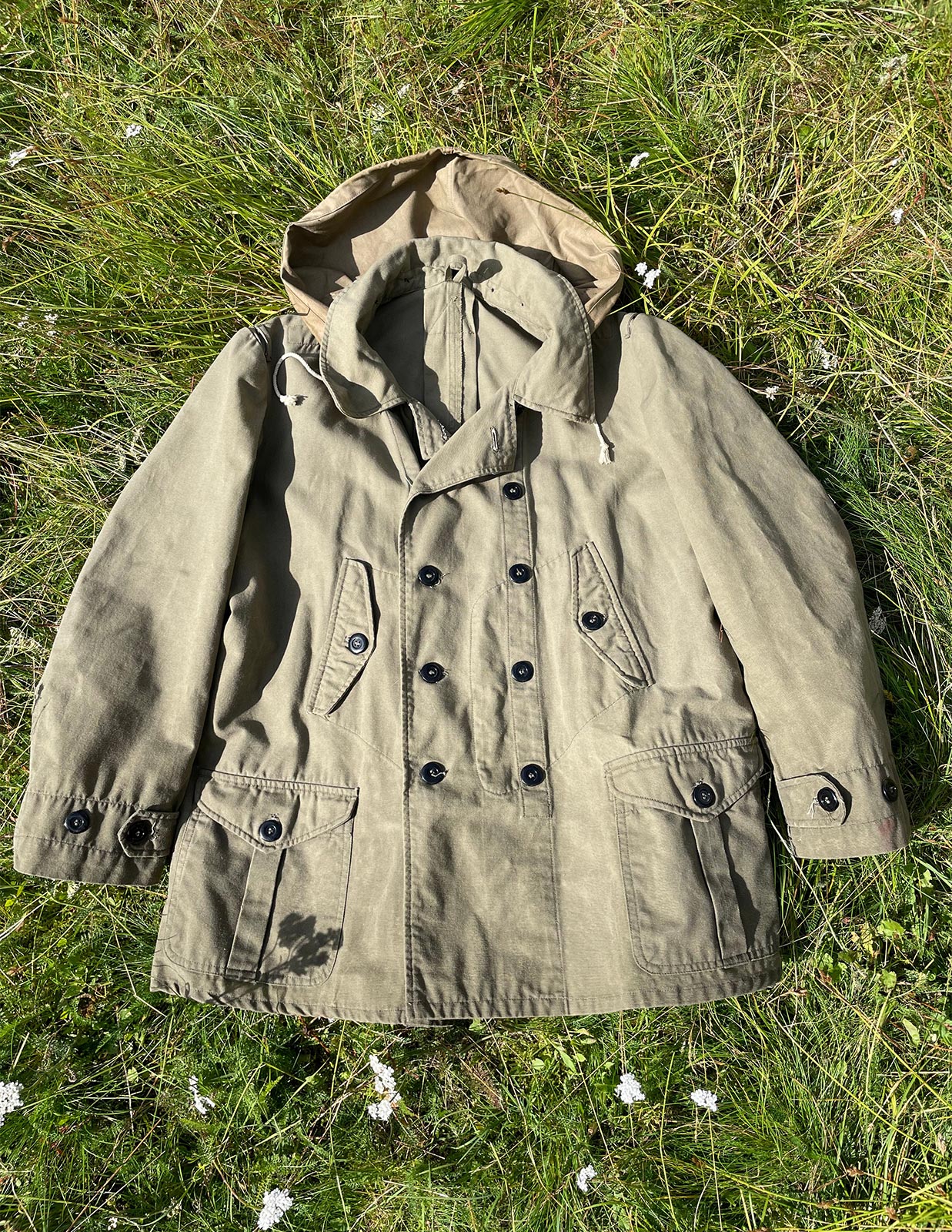
Ready. Not easy to show in the photo, but the lower half is notably stiffer and a bit darker. I also added a button-on hood on the jacket.
Take yer own responsibility!
The purpose of this DIY article is to bring some joy in the life of the adventurous person, and we cannot and will not take any responsibility of the outcome or possible injury. Try this at your own risk.